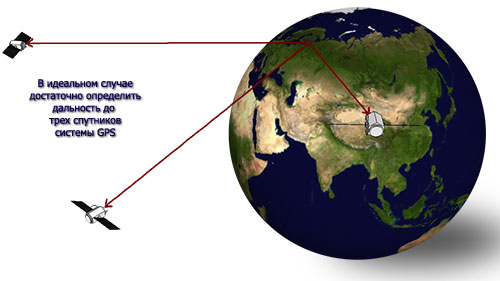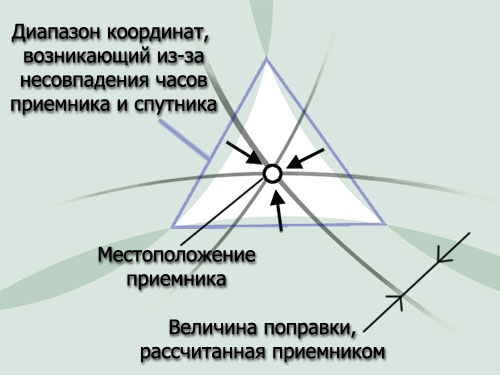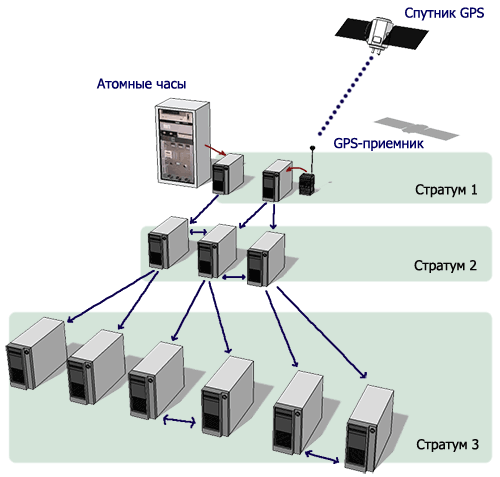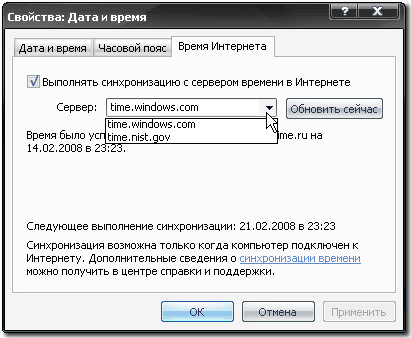Time
How time counts?
What is time? This question, only at first glance seemingly naive, can be devoted to a thick book, because time is one of the fundamental concepts in the most diverse fields of knowledge accumulated by mankind in its history - astronomy, physics, philosophy, psychology...
Leaving behind this page such a vast topic about what time is, we want to tell you about how it is measured. The need to measure time hardly anyone is in doubt - because we must not be late for work, use various transport and communication systems, celebrate the holidays, finally!
In order that time can be measured at least somehow, it is necessary to solve three problems. First, select the time units and set the time scale. Secondly, create an accurate counter - the standard. Thirdly, to harmonize the testimony of the standard with the natural process on the basis of which it was created.
The units of time should be convenient enough on the one hand, and on the other hand - to provide the necessary measurement accuracy. As our planet rotates around its own axis, the most natural, and therefore long "invented" unit of time has become a sunny day - a period of time that passes from one upper culmination of the Sun to the other. But for a person a day is a fairly long period and it has to be broken down into shorter intervals.
There were many ideas how to do this. Long ago in Egypt, the numbers 12 and 60 were considered sacred. Apparently, we owe them the present 24 hours in the day, first appeared in Ancient Babylon. True, the clock was then "rubber" - exactly 12 hours from sunrise to sunset (daytime) and the same from sunset to sunrise (night). As you understand, the duration of these hours has changed throughout the year. Much later, the system used by us and now - in 24 hours, each for 60 identical minutes, consisting of the same 60-second.
With time scales - that is, with where "stack" seconds - everything is more complicated. Historically, the scale of universal time that arose in astronomy is given by the rotation of the Earth. Since 1884, the average solar time on the Greenwich meridian is called the Universal Time UT (Universal Time). For its calculation, astronomical observatories are used. However, it must be amended due to the displacement of the Earth's poles, the influence of tides and seasonal displacements of atmospheric masses. The most approximate to a uniform time scale, which can be obtained from observations of the daily motion of stars, is the system of universal time UT2. However, it can not be used alone for a long enough (several dozen years) period of time.
Why? Because the period of the Earth's rotation around its own axis - the value is not constant. Under the influence of lunar and solar tides, it is constantly increasing by several milliseconds in 100 years. There are other factors that cause a random change in the speed of rotation of our planet. To account for such changes, an ephemeris time scale was created - an ideally uniform time scale. Perfect so that it is impossible to reproduce the ephemeris second as a standard - because it is tied to the duration of the "tropical year in the fundamental era of 1900, January 0, 12 hours." It lasted from 1952 to 1986 and was replaced by dynamic time scales, which are still in use today.
Perhaps you have a question, but why do we need such precise methods of measuring time? Why measure a few milliseconds that have accumulated over the century? One of the most obvious examples is air transport. To determine the location of the aircraft, its side clocks must coincide with "ground" with an accuracy of 0.5 microseconds. But there are also more complex problems from the field of ballistics, astronautics, astronomy, computer technology.
As the development of technology and science required more and more accurate methods of measuring time, it was necessary to invent ever more perfect standards, allowing to reproduce and "store" a unit of time. The development of physics in the twentieth century made it possible to create a fundamentally new type of clock - an atomic clock. Despite its awesome name, such watches do not use nuclear energy to determine time. They are named so because they allow you to count the vibrations of atoms, like the click of a metronome. These oscillations are an extremely stable and uniform natural process that does not depend on the rotation of the Earth or the motion of the bodies of the solar system. Atomic clocks of recent generations based on cesium (in particular, NIST-7) allow an error of not more than 1 second for 6 million years.
In 1967, the definition of the atomic second was given. It sounds like this: "the duration of 9,192,631,770 oscillations of radiation corresponding to the resonance frequency of the transition between two levels of the hyperfine structure of the ground state of the cesium-133 atom, in the absence of perturbations from external fields." The appearance of molecular and atomic frequency standards led to the creation of an absolutely new time scale - the scale of international atomic time TAI (Time Atomic International).
This scale, as was said above, is very stable, uniform, and very simple to use. However, its incredible accuracy (remember the figure of more than 9 billion vibrations per second?) Also creates a number of problems - after all, getting accurate readings of atomic clocks is much easier than for conventional ones. Add here the varying duration of the day - and we get a cumulative error.
Initially, this problem was tried to solve by changing the duration of the atomic second, constantly adjusting it to the "usual" time. However, it soon became clear that this was extremely inconvenient. As a result, the Universal Time Coordination (UTC). was created, the current Greenwich Mean Time (GMT).. It introduced a cunning "extra second".
All this is very similar to the calendar - after all, in fact, the year is not equal to the whole number of days, but we do not use as a "tail" something like December 32 lasting a quarter of usual days, right? Just once in four years - in a leap year - add one whole day to the calendar. The same is done with an additional second with a discrepancy of scales greater than 0.9s. In this case, the UTC) scale is shifted by exactly one second. The last such second at the time of writing this page was introduced on December 31, 2005, becoming the 33rd in a row.
The transmission of time signals was carried out in various ways. In the early twentieth century, they were sent over the radio, later television was connected (in contrast to the mythical "25th frame", the reference signals are transmitted in the sixth line of each odd field of the television signal of the ORT transmitter). An interesting detail - the signals of the exact time transmitted through the sound networks, contain information about the current hour. Therefore, the duration of the sixth, long signal varies depending on the time of day.
However, time and progress do not stand still...
GPS and GLONASS.
The appearance of accurate and reliable clocks, simultaneously having acceptable compactness and mass, formed the basis for the creation of existing and developed global navigation systems. At the moment the fully functioning satellite navigation system is NAVSTAR (GPS), developed, implemented and fully operated by the US Department of Defense. Initially, the NAVSTAR project was intended exclusively for military use. However, after a sad incident in 1983, when a Korean Airliner carrying 269 passengers on board (according to the official version, its pilots followed an erroneous course), was shot down over the territory of the Soviet Union, US President R. Reagan was allowed to use NAVSTAR for civilian purposes.
A similar Russian system - GLONASS belongs to the Ministry of Defense of the Russian Federation. Its development was started back in the USSR, and the first GLONASS satellite was launched in October 1982. To ensure that the signals of satellite navigation systems can be received at any time anywhere in the world, the number of orbital constellation should consist of not less than 24 apparatuses. In the composition of GLONASS, 24 satellites operated only in 1995. At the moment, the orbital grouping consists of 16 spacecrafts, and, according to the Russian leadership, intensive work is under way to ensure its full-fledged functioning.
Similar systems are being developed in China (Beidou) and Europe (Galileo). Do you wonder why from the exact measurement of time we "jumped" to coordinate determination systems? Have a little patience, it will be clear to you soon.
The idea behind satellite navigation systems is extremely simple. Around the Earth, a system of satellites unfolds. As they move in an airless space, their orbits can be very accurately calculated. Accordingly, it is also possible to accurately determine their coordinates at any given time. Knowing the coordinates of the satellites and the distance to several of them, it is easy to determine the location of the point from which the range was measured. Yes, yes - it's really simple, to determine the distance to those flying at a huge speed somewhere high above the heads of satellites!
Satellites send a radio signal at regular intervals, which gets to the navigation receiver. The speed at which the signal propagates is known - this is the speed of light. In ideal conditions it remains to find out the time that has elapsed since the moment the signal was sent before it was received. How to find out? Too simple - the signal is coded in a special way, and it contains information about when he left the satellite. It only remains to detect when it was received by the receiver, and multiply the speed for the time that the signal was on the way - a simple formula from the textbook of physics of the 6th grade. A little more trigonometry level of the same sixth grade, and having three measured ranges, we can accurately determine the coordinates of the point from which the measurement was made. But we did not waste sight of the ideal conditions.

Determination of coordinates by distance to satellites
Since the propagation speed of the signal is known to us, the decisive factor in the accuracy of measurements is the accuracy of determining the time interval during which the signal travels from satellite to receiver antenna. It is clear that the side clock of the components of the entire system - the satellites and the receiver - must be precisely synchronized. The discrepancy of "all" in one hundredth of a second - and the error in measuring the range will be almost 3 thousand kilometers!
That's exactly the moment that interests us. In the NAVSTAR (GPS) positioning system, each satellite carries from 2 to 4 atomic clocks. Synchronization of the airborne clock of the space segment of the system is carried out from the ground control center (however, the last series of satellites NAVSTAR are able to synchronize time and among themselves - in case of communication failures with the control center).
The idea to use an atomic clock in the GPS receiver is very doubtful: firstly, its cost will be several tens of thousands of dollars, and secondly, the portability of such a device is out of the question. The way out of this situation is also quite simple. In practice, GPS receivers use conventional quartz watches, widely used in a variety of electronic equipment. Their accuracy is incomparable with the atomic clock, but to calculate the location, the distance measurement is used to another, fourth satellite. Moreover, even without knowing the difference between the satellite and receiver clock, the range of coordinates in which the receiver is presumably located is determined. And since it can not be in several places at the same time, the receiver simply starts sequentially sorting out the amount of correction to its clock until it finds one in which the data of four satellites point exactly to one point. Automatically, the receiver clock is synchronized with the satellite clock.

Calculate the GPS receiver's exact location
How computers clock synchronize.
One of the important conditions for combining computers in computer networks is the synchronization of their system clock. And if, for example, a simple browsing of web pages in a browser window does not require a clock from the server and the client, then in the case of building corporate networks this condition is one of the mandatory.
Services that provide network interaction, the components of the security system are very sensitive to the accuracy of the clock. For example, Kerberos authentication protocol, which is widely used in networks built on Windows OS, simply does not "let" the client on the network, if the time on its local clock differs from the server time by more than 5 minutes.
Applications that use complex databases that serve a large number of requests require much more accurate time than what a person usually does. And, not only the same on all the machines entering the system, but also coinciding with the true. As an example, we can cite cellular operators' accounting systems that process a huge amount of information every second, noting the time when subscribers start and end calls, calculating the length of calls, and ensuring the sending of SMS and MMS messages.
To synchronize the clock of computers, a specially developed NTP (Network Time Protocol) protocol is usually used. It consists of a set of rather complex algorithms that allow accurate (up to several microseconds) and reliable (you can check with several sources of exact time) to perform the synchronization process.
NTP protocol is constantly being improved - its fourth version is already implemented. In addition, there is its "light" version - SNTP (Simple Network Time Protocol), compatible with NTP. SNTP is used in networks that do not impose high demands on accuracy. The main difference is that NTP includes special filters that allow you to calculate the exact time even in the case of packet transmission over networks that have an unknown and random delay, in particular, the Internet.
The NTP model is hierarchical. The hierarchy steps are called stratums. Servers at the top of the hierarchy (First stratum, Stratum1) are directly connected to a source of exact time (such as an atomic clock or a GPS clock) and use the most accurate time. The simplest way to get the exact time to date is to synchronize with GPS satellites, which is why we described above how NAVSTAR-GPS and GLONASS systems work.

Hierarchy of NTP servers
The main use of the NTP protocol on the Internet is done in a "client-server" scheme. The client computer sends the request to the NTP server, according to which the client configures its internal clock. In the OS from Microsoft, starting with Windows XP, the user of the home computer, or the computer entering into the working group, can independently set the time server by which the local clock of the computer will be adjusted. It is worth noting two things - synchronization is carried out via SNTP, and the time.windows.com, which is offered as the main server, works in the third stratum

Synchronizing the system clock in Windows
In addition to this mode, there are others that are used primarily on local networks - for example, broadcasting broadcast packets by an NTP server at regular intervals.
About
kiev-time.ru — shows the exact time in Kiev and Ukraine.
Our online watch is constantly synchronized with the NTP server, so you can always be sure of the accuracy of time on our website.
Kiev Time
The territory of Ukraine located in the Eastern European Time Zone (UTC+02:00 and UTC+03:00 in summer).
The change for daylight saving time takes place in the last week of March at 3:00 a.m. - time changes an hour ahead, and the last week of October at 4:00 a.m. - time changes an hour back.
Contact us
We strive to make the best service of exact time and we really appreciate your suggestions and feedback.
Contact us via e-mail timeonline.adm@gmail.com
